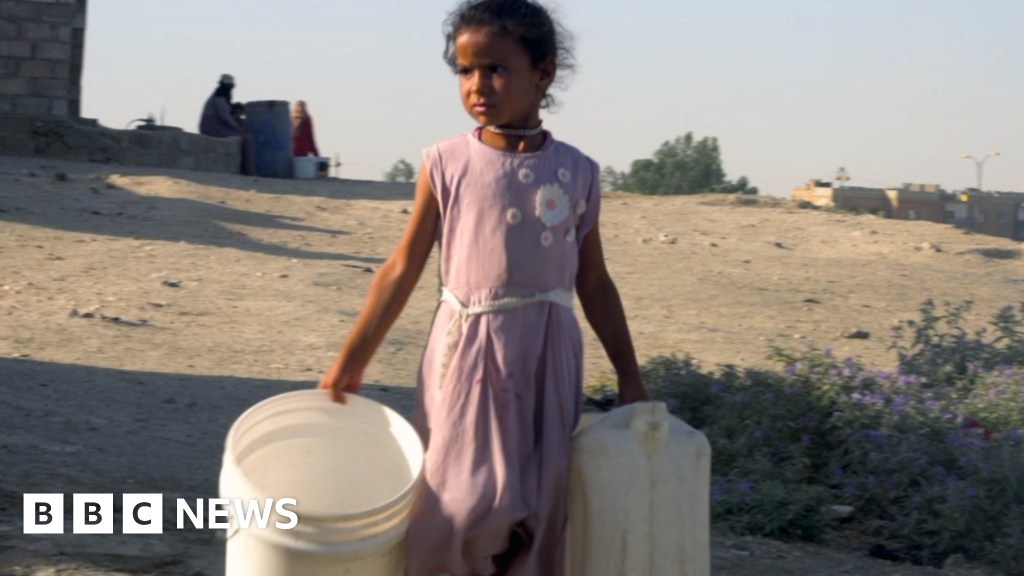ARTICLE AD BOX
By Imogen Foulkes
BBC News, Geneva

A rise in global temperatures is causing glaciers in the Swiss Alps to shrink
Switzerland's glaciers have lost more than half their volume in less than a hundred years, and the long hot summer this year has accelerated the thaw, a new study shows.
The glaciers support ski resorts and attract climbers and hikers in summer, but are also essential to Europe's water supply. Now, communities across the Alps are worrying about their future.
In Switzerland, at 3,000m (9,800ft) above sea level, you expect to see ice. But above the village of Les Diablerets, where cable car company Glacier 3000 operates, there are now huge areas of bare rock.
Two glaciers, the Tsanfleuron and the Scex Rouge, have split apart, revealing ground not seen for thousands of years. "We're probably the first people walking here," says Bernhard Tschannen, who runs the company.
Mr Tschannen is watching one of Switzerland's top attractions disappear before his eyes.
Visiting tourists can see from the Eiger to the Matterhorn to Mont Blanc. They could also, until recently, walk across miles of pristine blue glacier.
BBC
I feel kind of helpless, if you look at the big picture... it's a very sad thing
Now the ice is broken up by rock, mud, and puddles. The change is dramatic.
"When we constructed this chairlift we had to dig seven metres into the ice. This was 23 years back," he explains. "Look,"' he points several metres further away, "where the glacier is now".
Scientists have been monitoring the shrinking of Alpine glaciers for years. A joint study by Zurich's Federal Institute of Technology and the Swiss Federal Office for Landscape compared topographic images of glaciers from the 1930s, to those from the last 10 years.
Your device may not support this visualisation
The findings are in line with long standing evidence that Europe's glaciers are shrinking, and that there is a direct link between the ice loss and global warming.
Ice caps are particularly sensitive to changes in temperature, so if the earth warms, glaciers are the first to notice, and respond, by melting.
Mauro Fischer, a glaciologist at the University of Bern, is responsible for monitoring the Tsanfleuron and Scex Rouge. Every year in spring he installs ice measuring rods, and checks them regularly over the summer and autumn.
When he went to check them in July, he got a shock.
The rods had melted completely out of the ice, and were lying on the ground. His ice measurements, he says, were "off the chart - far beyond what we've ever measured since the beginning of the glacier monitoring, maybe three times more mass loss over one year than the average over the last 10 years".
The thaw brings danger with it. In the famous resort of Zermatt, climbing trails up to the Matterhorn have had to close because, as the glaciers melt, the rock once held together by ice becomes unstable.
Richard Lehner, a Zermatt mountain guide like his father and grandfather before him, has spent less time climbing this summer, and more time repairing or rerouting risky paths. He remembers when he could walk right across the Gorner glacier. Not any more.
"The permafrost on the mountains is melting off. You have more crevasses on the glacier, because there is not enough snow from the winter, and it makes our job more challenging. You have to think more about risk management."
Melting glaciers also reveal long-held secrets. This summer, the wreckage of a plane that crashed in 1968 emerged from the Aletsch glacier. The bodies of climbers, missing for decades but perfectly preserved by the ice, have also been discovered.
The wreckage of a small aircraft has been uncovered due to the thawing of ice
But the consequences of the ice loss are far wider than the damage to local tourism, or finding lost climbers.
Glaciers are often referred to as the water towers of Europe. They store the winter snow, and release it gently over the summer, providing water for Europe's rivers and crops, and to cool its nuclear power stations.
Already this summer, freight along the Rhine in Germany has been interrupted because the water level is too low for heavily laden barges. In Switzerland, dying fish are being hastily rescued from rivers which are too shallow and too warm.
In France and Switzerland, nuclear power stations have had to reduce capacity because the water to cool them is limited.
Watch: Swiss glaciers disappearing at record speed
Samuel Nussbaumer of the World Glacier Monitoring Service believes it is a sign of what is to come.
He says current projections suggest that by end of the century the only ice remaining will be high up in the mountains: "Above 3,500m there will still be some ice in 100 years. So, if this ice is gone, there won't be any water any more."
The extent of the loss this summer has focused minds. Glaciologist Mauro Fischer admits that even though he knew, because of his monitoring, what was happening, the outcome made him emotional. "It's as if the melting glaciers are crying. The high mountain environments tell us we really need to change. It makes me really sad."
At Glacier 3000, a popular tourist destination, blocks of ice have been wrapped in protective coverings
At Glacier 3000, Bernhard Tschannen has begun wrapping some of the remaining ice in protective coverings in a bid to slow down the thaw. Asked if he feels helpless, there is a long pause.
"We can contribute that it's perhaps a bit less fast, but I think we cannot stop it completely, at least not at this altitude for the glaciers."
In Zermatt, Richard Lehner's great-grandparents used to hope the glaciers would not extend too far into the valley and cover their pastures. In the 19th Century, there was so much ice that poor Swiss Alpine communities carved parts of it off and sold it to smart Paris hotels, to keep the champagne cold.
Those days are long gone, and no-one is especially nostalgic for them.
But to have no glaciers at all?
"We have a problem," says Richard. "All over Europe, it's not just up here in the mountains. These glaciers, this water, I don't know how we're going to live without the glaciers."

 2 years ago
21
2 years ago
21








 English (US)
English (US)